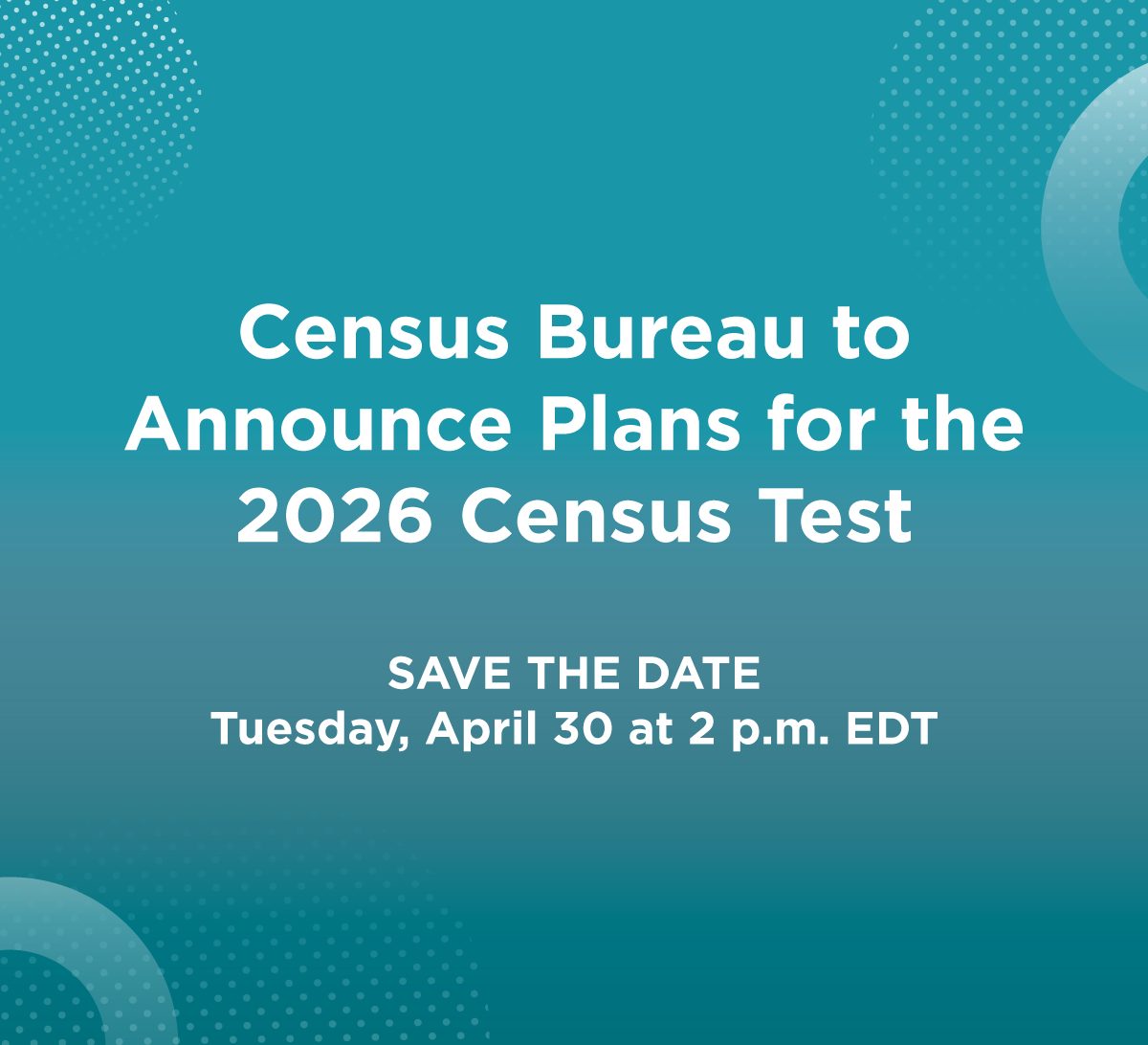For Immediate Release: Monday, March 02, 2020
2020 Census Response Rate Map Preview Now Available
MARCH 2, 2020 — The U.S. Census Bureau launched a new online map today as part of its 2020 Census Response Rate Challenge — where state, local and community leaders work together to promote a complete and accurate count by increasing the self-response rate in their community. The preview map currently displays 2010 Census self-response rates as a reference point for states, counties, cities and census tracts around the country. Users will be able to use the map to track their community’s progress in responding to the 2020 Census.
As people begin responding to the 2020 Census online, by phone or by mail in mid-March, the Census Bureau will update the map daily to reflect the percentage of households that self-respond online, by phone or by mail after being invited to do so. (The rate will be provided for the three modes combined and for online alone.)
“The 2020 Census Self-Response Rate Map is an important tool for community leaders, especially national, state and local elected officials, who are conducting public outreach campaigns about the 2020 Census,” said Dr. Steven Dillingham, director of the Census Bureau. “The daily updates to the map will help community leaders motivate their residents to respond.”
Highlights of the map include:
- Daily updates to self-response rates for households that have self-responded to the 2020 Census (online, by phone or by mail) beginning mid-March.
- The ability to search for response rates for states, counties, cities and census tracts from the 2010 Census initially and, as current response rate information becomes available March 20, for the 2020 Census.
- Current 2020 total self-response rates and internet response rates in comparison to final 2010 Census response rates and previous day-by-day 2020 response rates.
- An embeddable widget that will allow Response Rate Challenge participants to include the map on their own websites.
- 2020 Census response rate data available in the public application programming interface (API).
- Background information and instructions for how to use the map and the data presented, including examples of Response Rate Challenges.
The 2010 self-response rates do not include those who were counted during the in-person follow-up phase. The 2020 Census Response Rate map will not include responses obtained during Group Quarters and Transitory Locations operations, and other special enumeration operations such as those conducted in remote or certain tribal areas. In addition, it does not include responses obtained during the Nonresponse Followup operation, where a census taker visits households that have not yet responded online, by phone or by mail.
Due to changes in geographic boundaries and the editing of addresses in the Census Bureau’s updated address file, the 2010 Census self-response rates displayed in this map may not match state, county and census tract self-response rates previously released following the 2010 Census. Rates released following the 2010 Census are considered the “official” self-response rates.
Response Rate Challenge Toolkit
To increase participation in the 2020 Census across the country, the Census Bureau is challenging communities nationwide to complete their census forms online, by phone or by mail. The Census Bureau has created an online toolkit with ideas communities can use to encourage their residents to improve their response rate. The Response Outreach Area Mapper (ROAM) web application has an interactive map that can be used to identify areas that typically have low response rates for censuses and surveys. Recent updates to the toolkit include media, community and partner outreach materials.
As required by the U.S. Constitution, the goal of the once-a-decade census is to count every person living in the United States. Census data are the basis for our democratic system of government, ensuring that representation in government is equally distributed. Census results shape the future of communities, as census data informs how hundreds of billions of dollars in federal funds are distributed for health clinics, school lunch programs, disaster recovery initiatives, and other critical programs and services for the next 10 years.
Share information on social media channels about the upcoming census and why it's important to respond. 2020 Census partners and stakeholders, media members, government officials and others can all play a role in ensuring that everyone is counted once, only once, and in the right place.
###







